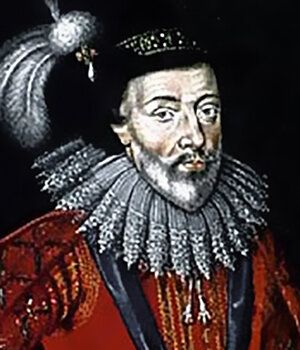Candidates for Authorship
Below are brief introductions to nine of the major authorship candidate theories. Click the links to find more extensive information on each one.
Sir Francis Bacon
Two Inns of Court lawyer-poets, Joseph Hall and John Marston, in 1598 refer to the author of the Shakespeare poem, Venus and Adonis, as “Labeo,” a jurist, who is also to be identified by the motto Mediocria firma. The motto was the specific heraldic motto of Francis and Anthony Bacon at that time, but, of the two, only Francis Bacon was a jurist.
Edward de Vere, 17th Earl of Oxford
De Vere possessed the classical learning and knowledge of the law, music, Italian culture, and aristocratic sports that feature so prominently in the Shakespeare canon. The poetry that has survived under his own name, as well as his letters, both corroborate the case for his authorship.
John Florio
Recognised as the most important humanist in English Renaissance, Florio defined himself: “Italian tongue, English at heart.” He contributed more than a thousand words to the English language. In his works, including his dictionaries and translation of Montaigne’s Essays, are many dialogues, proverbs, and words attributed to Shakespeare.
Christopher Marlowe
William Shakespeare was “born” as an author shortly after Marlowe’s supposed death. Venus and Adonis was registered anonymously on 18 April 1593, and the first recorded purchase on 12 June 1593, less than a fortnight after Marlowe’s apparent death, marked the first appearance of the name “William Shakespeare” in any literary or theatrical context.
Sir Henry Neville
Neville’s life parallels the accepted course and chronology of Shakespeare’s works; his life experiences can explain the development of Shakespeare’s writing. Five independent researchers have found the name “Henry Neville” encoded in various ways in the dedication to the 1609 Shake-speare’s Sonnets and in the sonnets themselves.
William Shaksper of Stratford
William Shaksper is the conventional candidate. Many plays appeared under the name of “William Shakespeare,” “William Shake-speare,” or “Shakespere” from 1598, culminating in the collected works (First Folio) in 1623, seven years after his death.
Mary Sidney, Countess of Pembroke
For two decades Mary Sidney developed and led the most important and influential literary circle in English history, now called Wilton Circle. She is the first woman to publish a play in English (closet drama) and the first woman to publish an original pastoral piece in English. Her mission in life was to create great works in the English language.
William Stanley, 6th Earl of Derby
William Stanley was patron of a troupe of players, and plays were frequently performed at his mansions at Knowsley and Lathom, Lancashire. In 1599 he financed the revival of the Paul’s Boys acting troupe, and in subsequent years his own troupe of players, Derby’s Men, played frequently before the Court.









